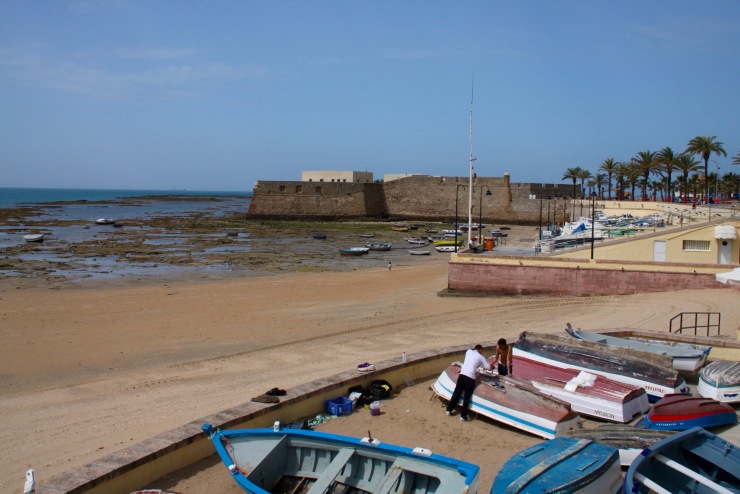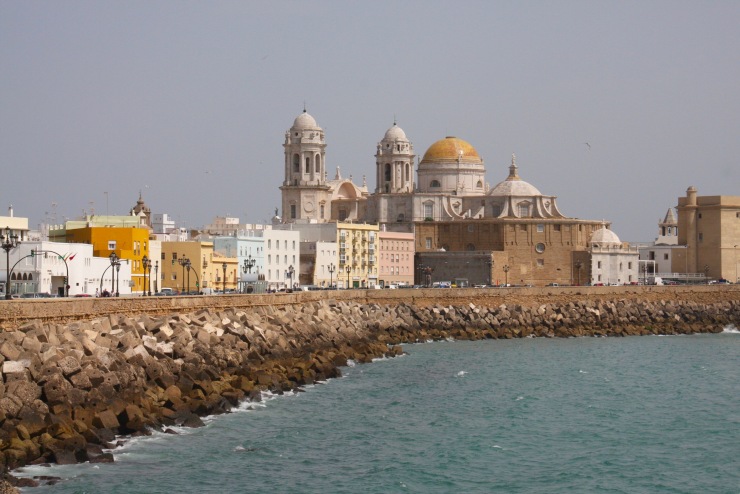My grandfather had a saying, used to explain the inexplicable. A dour, world-weary phrase that summed up the whole of human existence. It came without the need for further explanation, a full stop to any conversation. “Aye, there’s now’t as strange as folk”, was pronounced whilst listening to news of extraordinary events somewhere in the world, or local gossip, before going back to reading the Westmorland Gazette.
That phrase came forcefully to mind recently. I was extolling the joys of Cadiz to an old friend, telling her about how exhilarating the city was, how glorious the nearby beaches, how delicious the seafood washed down with a chilled glass of fino … I was met with a stoney silence, broken only when she said, “Oh, we went there a couple of years ago. We hated it.” Hated it! How can anyone hate Cadiz? People really are strange.



Cadiz may be more down to earth than its famous Andalusian rivals; its buildings may be more weathered, with peeling paint and crumbling plaster; and it may be a little rough around the edges, but that just adds to the phenomenal charm of this glorious city. After all, this is the oldest continuously inhabited city in Europe. It must be doing something right.
Cadiz sits on a narrow strip of land jutting out from Spain into the Atlantic Ocean. The ancient old town is shaped like a ball at the end of the peninsular, and crammed within its narrow confines are historic neighbourhoods, dozens of ancient churches, leafy plazas and atmospheric bars. The tightly packed streets are a little claustrophobic, emerging out of them into the brilliant sunlight of the ocean front is almost shocking.





La Caleta, the city beach, is wedged between old forts and offers sweeping panoramas over the ocean. Small fishing boats picturesquely bob up and down on the waves. This area has gained the nickname of Little Havana, the city’s seafront doing a passable impersonation of Havana’s Malecón – Havana’s crenelated fortifications are modelled on Cadiz. Like its more famous counterpart, it’s definitely the place to be at sunset.
Cadiz’s relationship with the sea dates back millennia, it’s a suitably excitement-packed history. The city was founded in 1100 BC by Phoenician traders. Centuries later it was captured by the Carthaginians, and Spain became the main European stronghold for Carthage’s resistance to the Roman Empire. It was from Spain that Hannibal launched an offensive against Rome involving his legendary crossing of the Alps on elephants.







After the final defeat of Carthage the city became Roman, whose empire in turn collapsed. Cadiz was controlled by different civilisations until the arrival of the Moors in 711, after which it was renamed Jazirat Qadis. For the next 551 years it remained a vital port and stronghold for Moorish rule. It fell to Alfonso X of Castile during the Reconquista in 1262, and has been Spanish ever since.
The city boomed after the discovery of the Americas in 1492, becoming the base for Spain’s treasure fleets. Gold and silver, flowing across the Atlantic, made Cadiz rich. It also made it a target for anyone who wanted to get their hands on Spanish gold. Chief amongst whom were the ‘privateers’ working for Elizabeth I of England. Sir Francis Drake attacked the port in 1587. Lord Essex launched a more destructive attack in 1596, burning the city, including the 13th century cathedral.



Cadiz briefly became the capital of Spain during the Napoleonic Wars, when Spain was occupied by the French. The city bore witness to Admiral Horatio Nelson’s victory at Trafalgar in 1805, which included the destruction of a Spanish fleet. This loss, and Napoleon’s occupation, hastened the collapse of Spain’s empire, without which Cadiz slid into a long period of decline from which it has never fully recovered.
Today this extraordinarily rich history is writ large across the city. The best way of discovering it is to wander aimlessly and let it find you. In between, stop off at the many tapas places on pretty plazas, have a sherry (or two) in atmospheric bars, and eat fried fish on La Caleta watching the sun set while imagining the sights this city has seen over the centuries. What’s not to love about that?
